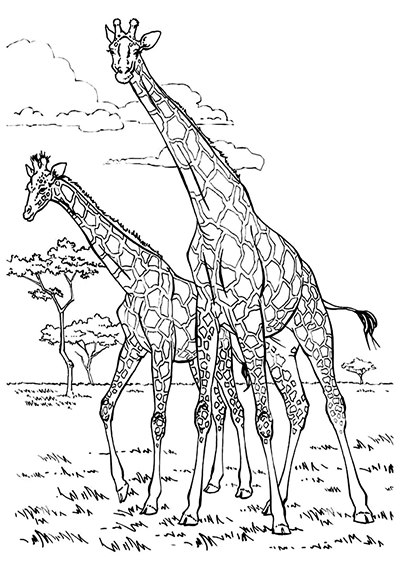8 Trending Coloring Page Topics for Kids
Coloring pages have long been a beloved pastime for both children and adults, offering a relaxing and creative escape. The trend continues with a variety of new themes and concepts that cater to diverse interests and age groups. Here’s a look at some of the hottest coloring page topics this year.
1. Nature and Wildlife
In line with the growing global awareness of environmental issues, nature and wildlife-themed coloring books have gained significant popularity. These coloring pages often feature detailed illustrations of landscapes, animals, and plant life. Books like “Wilderness Wonders” and “Ocean Odyssey” not only provide a calming coloring experience but also educate colorists about different ecosystems and conservation efforts.
The intricate designs and informative content make these books a hit among eco-conscious individuals. Source: PrintableAll
2. Cultural and Artistic Movements
Coloring books that celebrate various cultural and artistic movements are trending. These books offer a deep dive into different cultures and historical art styles, from traditional African patterns to the bold colors of Pop Art. They are not just about filling in colors but also about learning and appreciating the art forms and cultural significances behind them. This educational aspect appeals to those who seek a blend of creativity and knowledge.
3. Seasonal and Holiday Themes
Seasonal and holiday-themed coloring pages continue to be a favorite. Whether it’s the festive spirit of Christmas, the spookiness of Halloween, or the celebrations of Lunar New Year, these themes are evergreen. Coloring pages for holidays often feature thematic elements that resonate with both kids and adults, making them perfect for family activities during festive times.
4. Characters and Pop Culture
Popular characters from movies, TV shows, and video games remain a big draw in the coloring book market. Superheroes, animated characters, and figures from trending pop culture provide a fun and engaging experience for fans. These pages not only entertain but also allow fans to express their love for their favorite characters creatively. Image Source: coloringlib
5. Educational and Developmental Themes
Coloring books designed to educate are trending among parents and educators. These books focus on teaching basics such as letters, numbers, shapes, and colors through fun and engaging illustrations. Books with bold outlines and simple designs are perfect for young children, helping them develop motor skills and cognitive abilities while keeping them entertained.
6. Mindfulness and Stress Relief
Adult coloring books aimed at promoting mindfulness and stress relief are highly popular. These books often feature intricate patterns, such as mandalas and geometric designs, which help adults relax and practice mindfulness through the act of coloring. The repetitive and detailed nature of these designs aids in reducing stress and enhancing concentration. Source: Mindfulness Coloring

7. Space and Science
Space-themed coloring books captivate those fascinated by the cosmos. Featuring planets, rockets, astronauts, and other celestial elements, these pages not only entertain but also inspire curiosity about space exploration and science. The detailed and educational illustrations make these books appealing to both children and adults who are interested in learning more about the universe.
8. Fantasy and Fairy Tales
Fantasy-themed coloring books transport colorists into magical worlds filled with mythical creatures, enchanting landscapes, and fairy tale adventures. These books are especially popular among those who enjoy creative storytelling and imaginative play. Whether it’s dragons, unicorns, or mermaids, these fantastical elements provide a delightful escape from reality.
Conclusion
The variety of trending coloring page topics reflects the diverse interests and needs of colorists today. From nature and wildlife to cultural and artistic movements, seasonal themes, popular characters, educational content, mindfulness, fantasy, and space, there is something for everyone. You can also use online tools to turn photos into coloring pages. Regardless of the theme, these themes not only provide entertainment but also offer educational value, stress relief, and a means to explore creativity.
Whether you’re a parent looking for developmental activities for your child, an adult seeking a relaxing pastime, or simply a fan wanting to color your favorite characters, the coloring book market has something to offer. Dive into these trends and discover the joy and benefits of coloring with the latest and most engaging themes.











